Purchase ultra-tender beef
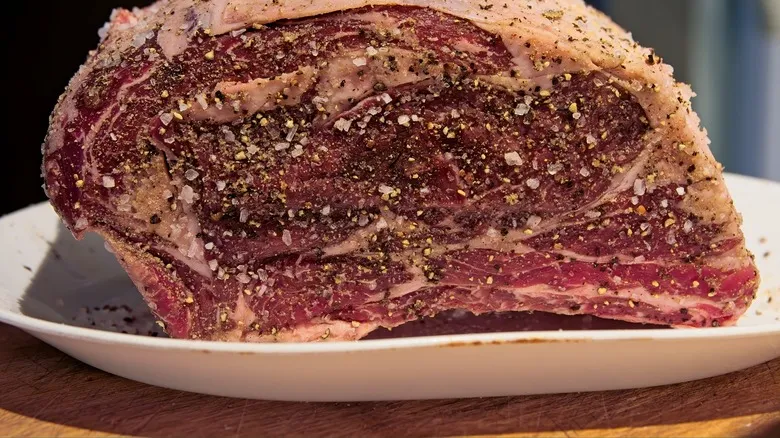
Almost any type of sandwich, no matter the style, can be spoiled by biting into tough, rubbery meat. When crafting your own Beef on Weck, it's essential to choose beef that maintains a juicy, easy-to-slice texture. Not every piece of beef is suitable for the slow-cooking required for roast beef, so selecting the right cut is crucial. While experts often recommend lean cuts with less fat, as demonstrated by Chowhound, there’s flexibility in choosing different varieties.
Moriarty Meats uses a steak cut known as top round for their sandwiches, which is favored for its ability to simmer down to a tender, fall-apart texture. Chef Brian Mahony from Eckl's believes that prime rib, although more expensive than other cuts, is a superior choice for Beef on Weck. "Prime rib offers exceptional flavor and is much more tender," Mahony explains, noting that top rounds can be difficult to slice and may become tough. From a professional standpoint, it’s vital to emphasize that only the juiciest, most succulent beef is suitable for a sandwich of this caliber.
Make sure to remove the fat
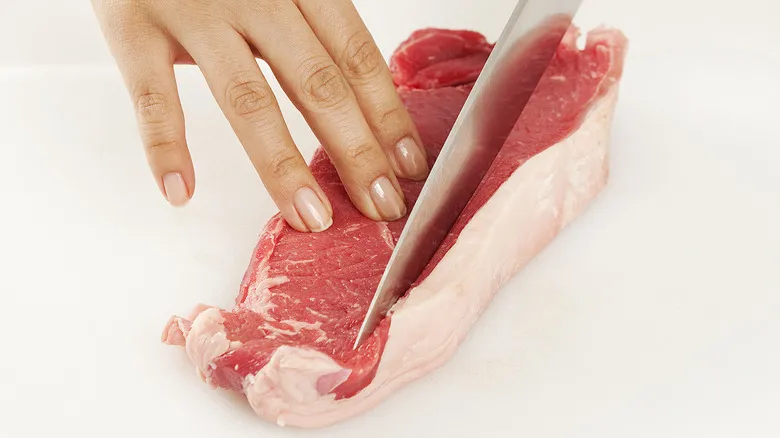
A hint of marbling in your beef can actually enhance its flavor, so it's best to keep it when aiming for the perfect steak. However, when it comes to Beef on Weck, experts strongly recommend trimming away any excess fat. Unwanted bits of gristle not only detract from the eating experience but also diminish the meat's ability to deliver a rich, full-bodied flavor. For instance, have you ever noticed that odd silver membrane on the surface? If you fail to remove it, any spice rub you apply won't penetrate the meat and activate during cooking.
Learning to trim away the unnecessary fat may take some practice, but it's a valuable skill that pays tribute to the butchers of Buffalo who have perfected this craft for over a century. Tom Moriarty, co-owner of Moriarty Meats, meticulously removes any tendon-like pieces to ensure a smooth surface free of fillers. Once that's done, your cutlet is primed for a generous application of seasonings and the delightful mouthfeel that awaits.
Season simply and abundantly

Much like a French Dip, Beef on Weck sandwiches don’t need any flashy gimmicks or extravagant toppings to tantalize the taste buds. The charm lies in the quality of the bread and beef, which is evident in every delicious bite. When it comes to seasoning your beef, it’s crucial to stick with basic spices that enhance rather than overshadow the sandwich's rich flavors. Generous amounts of salt, pepper, and dried herbs add depth while highlighting the exceptional quality of the meat.
While some places prefer to keep things straightforward, it’s always acceptable to adjust the spices to suit your taste. Tom Moriarty from Moriarty Meats advocates for a simple approach: "We like to keep it simple here – salt, salt, and more salt!" In contrast, taverns like Eckl's use a more complex blend of seasonings. "I dry rub my prime rib with granulated garlic and onion, dry thyme, salt, and pepper," shares Brian Mahony. The main distinction between granulated garlic and garlic powder is the coarser texture, which holds up better under high heat, making it ideal for marinades and rubs. So, feel free to experiment and find what works best for you.
Cook the meat slowly for succulent texture
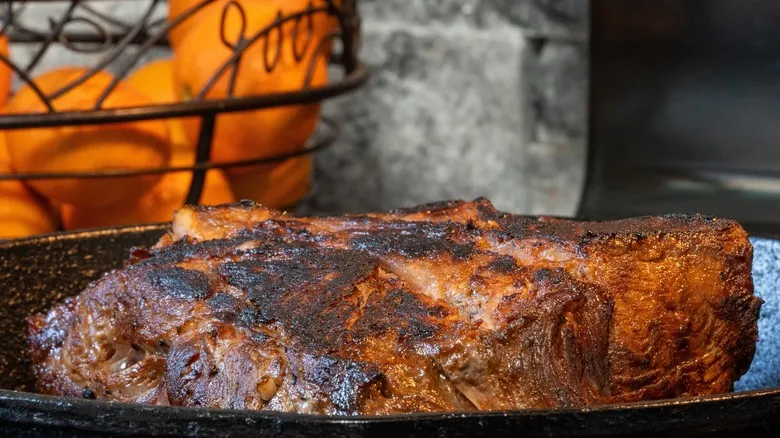
Mastering the Beef on Weck is truly an art form. Like any culinary masterpiece, this process requires patience and cannot be rushed. The essence of this sandwich lies in its rich, meaty center, making it essential for home cooks to allow the meat to cook for an extended period. By using a lower heat setting, your beef roast will retain its moisture and tenderness. "Low and slow is the key to achieving super tender beef," explains Tom Moriarty. Although the cooking process may be lengthy, it can be broken down into just two simple steps for delicious results. "Start by searing the roast, then cook it in the oven at 200°F until the internal temperature reaches 125°F," Moriarty advises.
Brian Mahony shares a similarly detailed approach to achieving flavorful beef. He begins by preheating the oven to 425°F and setting a timer for 45 minutes. After that, he recommends reducing the temperature to 275°F and allowing the roast to cook for an additional 90 minutes. For optimal results, it's important not to slice into the meat immediately after cooking; letting it rest for a short while is crucial. This resting period not only makes carving easier but also allows the juices that have collected in the oven to reabsorb into the meat, ensuring that the slices remain moist and tender when placed on the bun.
Kaiser rolls make a great Kummelweck dupe

A genuine Beef on Weck is anchored by a Kummelweck roll, which is a crucial element of this sandwich's irresistible charm. This bread — which translates to "caraway roll" in German — is golden-brown, crusty, and adorned with bits of pretzel salt and caraway seeds, enhancing the flavors of the roast beef and horseradish. It's a mouthwatering blend with a fascinating history. "The caraway seeds and salt were originally believed to encourage patrons to drink more beer at local bars," notes Brian Mahony.
However, finding them outside of Western New York is uncommon, as the recipe for this bread is deeply embedded in the city's German heritage. For the ideal roast beef sandwich, both of our experts agree that Kaiser rolls are the closest substitute. Their sturdy texture can support generous portions of meat and soak up the au jus without becoming soggy like other breads. You can easily purchase them from a grocery store or local bakery, season them as needed, and then toast them in the oven until golden. "People outside of Buffalo can simply sprinkle a Kaiser roll with salt and caraway, then bake it for 3-4 minutes in a 400°F oven," Mahony suggests. Another tip? Apply an egg wash before adding the toppings for a beautiful golden finish.
Carve the meat into thin slices
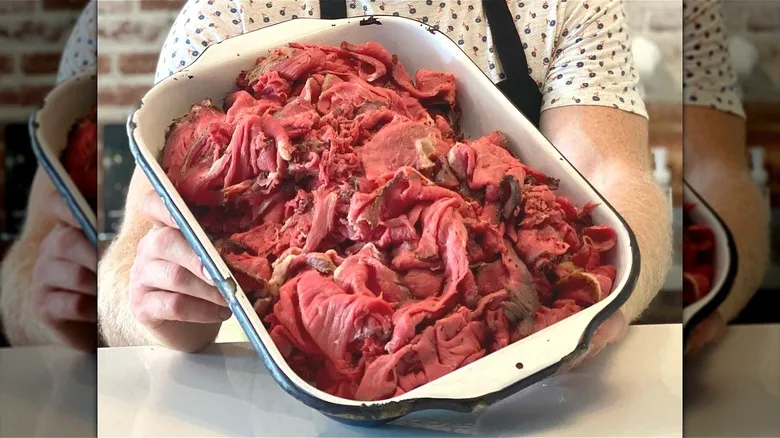
Creating the perfect sandwich involves layering semi-pink, tender roast beef, ensuring that the pieces are neither too thick nor cumbersome between the bread. An imbalance in thickness would stray from the beloved recipe cherished by generations of Western New Yorkers. Moreover, unevenly sliced meat can be a hassle to stack and eat, posing a choking hazard. When slicing, it's important to cut the meat into delicate, uniform morsels. This attention to detail will enhance both the assembly process and the stability of the beef stack, preventing it from slipping out of the roll.
Many seasoned Beef on Weck enthusiasts achieve this by hand-slicing, often using a high-quality carving knife. However, Moriarty Meats takes a different approach by utilizing equipment to produce perfectly sliced meat. Their machines, equipped with automated settings, ensure that each slice is consistent in size. "We prefer to use a deli slicer after the meat has fully chilled," explains Moriarty, who also notes that this method allows the beef's rare preparation to truly shine.
Slicing against the grain prevents chewy texture

Cutting slivers with your carving knife may seem simple—just slice and you're done, right? Not quite. Experienced cooks well-versed in Beef on Weck will tell you that there's a crucial technique for achieving the right texture: carving the meat against the grain. The "grain" refers to the fine lines visible on the surface of your cut. Cutting directly along these fibers—essentially, slicing vertically—results in toughness, which is a common (yet frustrating) mistake that can prevent your sandwich from reaching its full potential.
By slicing against the direction of the muscle fibers, you maintain the tender consistency that people love in this sandwich. Renowned spots like The Bar Bill Tavern demonstrate this butchery technique on-site, with skilled chefs expertly cutting across the meat to create thin slices of beef.
Professionals often use reliable methods to elevate their Beef on Weck, achieving a level of mastery that beginners might lack. Properly slicing your beef can transform an average Weck into a gourmet delight found in the finest establishments.
Au Jus is a necessity
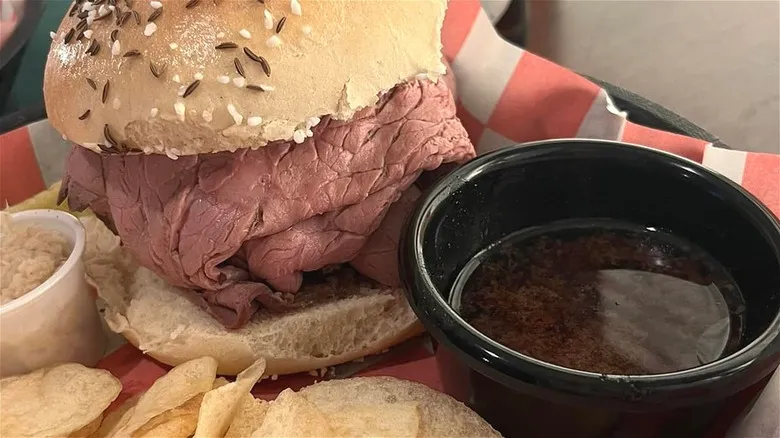
True Buffalonians know that without Au Jus, Beef on Weck would merely be another roast beef sandwich. Even with this savory sauce, a secret ingredient can always elevate the dish. The juices extracted from the roast are like liquid gold, enhancing the generous layers of meat nestled between that salty Kummelweck roll. So, how do you prepare Beef Au Jus? It’s quite simple: the key is to simmer the drippings with a roux—typically a mixture of butter and flour—until you achieve a thin, broth-like dip that you can enjoy to your heart's content.
How do you incorporate the sauce into the sandwich-making process? As Brian Mahony points out, "The beef is usually either dipped in Au Jus or served with a side of it," so you can offer yourself (and your dining companions) the option. Coating the beef first allows for an even distribution of Au Jus throughout the entire sandwich, which can be less messy in the long run. On the other hand, we understand the allure of dunking the sandwich directly into the bowl. With a sturdier bun, it’s less likely to become soggy compared to other sandwiches, and manually soaking up the juices ensures that none goes to waste.
Horseradish packs a deliciously-intense punch
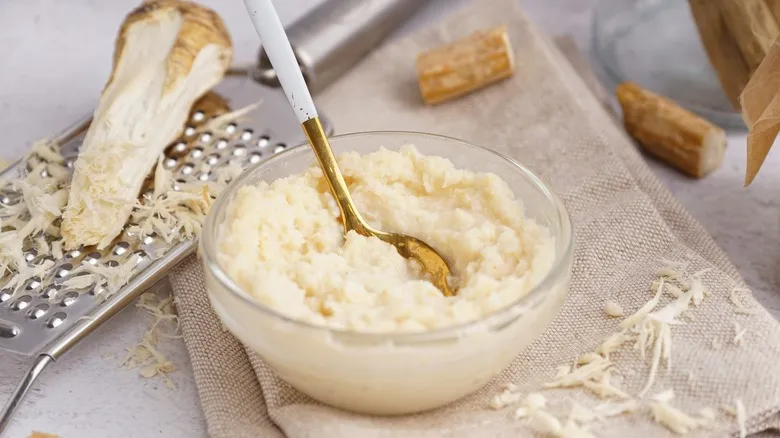
Would you prefer to create a Beef on Weck, or settle for a typical deli roast beef? There’s a clear difference, and it can largely be attributed to one fiery ingredient. Horseradish is a plant known for its intense heat, and just a small amount is enough to unleash its bold flavor. While some restaurants slather it on the sandwich by default, it’s also common to find horseradish served on the side, allowing diners to add it to their liking.
When it comes to preparing the topping from scratch, Mahony advises our readers to "start with a fresh horseradish root" — simply peel it, mince it, and mix in some ingredients to balance the heat and acidity (consider adding a pinch of sugar and vinegar). Tom Moriarty shared with Chowhound that at Moriarty Meats, they take a smoother approach with a horseradish-infused sauce. "We combine mayo with grated horseradish to taste, aiming for a bit of a kick," Moriarty explains. "In terms of texture, we strive for a delightful drip down the sides." You might need a napkin or two if you opt for the creamier condiment, but the burst of tangy sharpness will definitely be worth it.
Always dip the roll in Au Jus

There's no denying that a savory Au Jus enhances the Beef on Weck's simple yet luxurious qualities. If you want to impress your guests with your culinary skills, take a cue from Buffalo taverns and add this authentic touch. Before assembling the sandwich, dip the top half of your Kummelweck into the Au Jus. This step allows the beef sauce to play a vital role, ensuring that every bite is infused with flavor as you press it onto the horseradish and generous portions of beef. With the remaining Au Jus on your plate, your taste buds will revel in the delightful salty, umami burst.
The Kummelweck serves as an excellent base for this meaty sauce. For those who crave even more flavor, chef Brian Mahony points out that Au Jus can also work as a great adhesive for the rolls. "If you dip the Kaiser in Au Jus and then sprinkle on the salt and caraway, it will stick after baking," he explains. Beef Au Jus is truly remarkable as a versatile flavor enhancer, and your palate will appreciate this traditional (and well-deserved!) addition.
Plate the sandwich with a tasty accompaniment

Listen to the chefs who truly understand the nuances of the Weck: a well-chosen side dish can elevate the entire meal. When it comes to accompaniments, there are traditional options that have become staples due to the dish's strong regional ties. However, home cooks have plenty of opportunities to get creative and experiment with the side portions of their meals. According to Tom Moriarty from Chowhound, the possibilities for enhancing your meaty feast are nearly limitless. "French fries are a classic choice, but they’re versatile enough to pair with many of your favorite sides!"
If you're unsure where to begin, consider going the authentic route with a German-inspired twist. Drawing from the dish's roots in German-American culinary traditions is a reliable way to put a unique spin on the Buffalo classic. Take cues from historic taverns and serve it alongside pickled beets, zesty coleslaw, or a helping of German potato salad. Alternatively, you could opt for potato chips and a pickle spear for a pub-style experience. Almost any addition with a spicy kick or mustard flavor is a guaranteed match, even though, as Brian Mahony points out, enjoying just the handheld version is also a true local experience.
Recommended
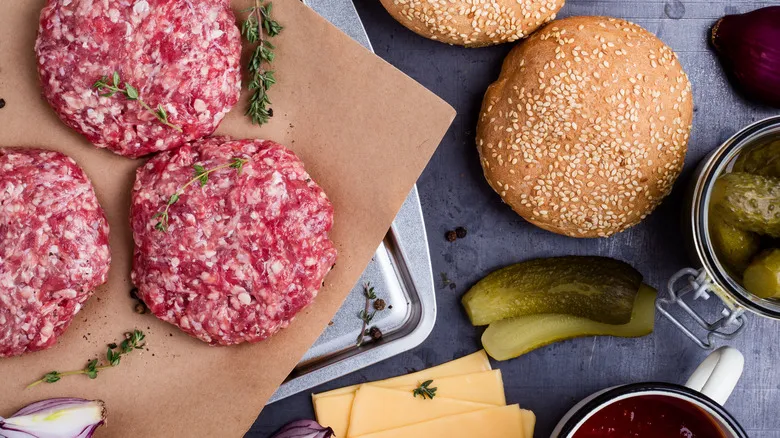
The Burger Bun Swap That Gives You The Fresh Taste Of Bruschetta In Each Bite

Mistakes Everyone Makes When Cooking Soup
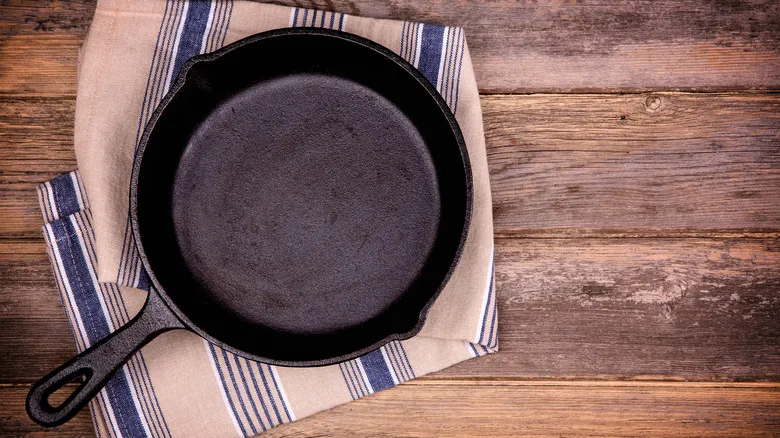
Why The Spatula You Use On Your Cast Iron Matters
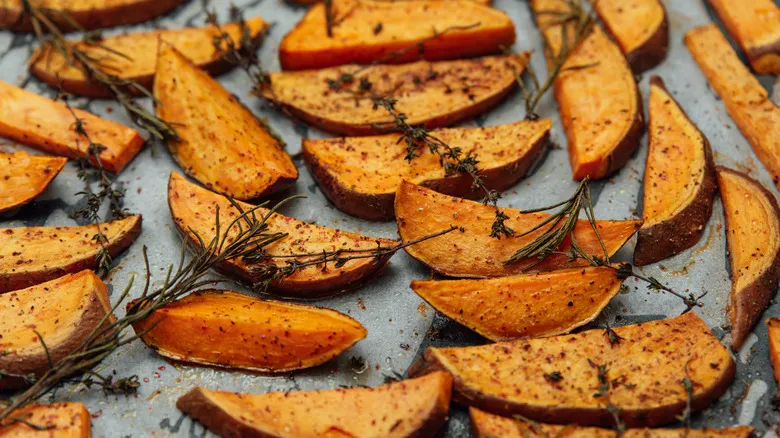
Roasted Sweet Potatoes Are What Your Vegetarian Sandwiches Have Been Missing
Next up

